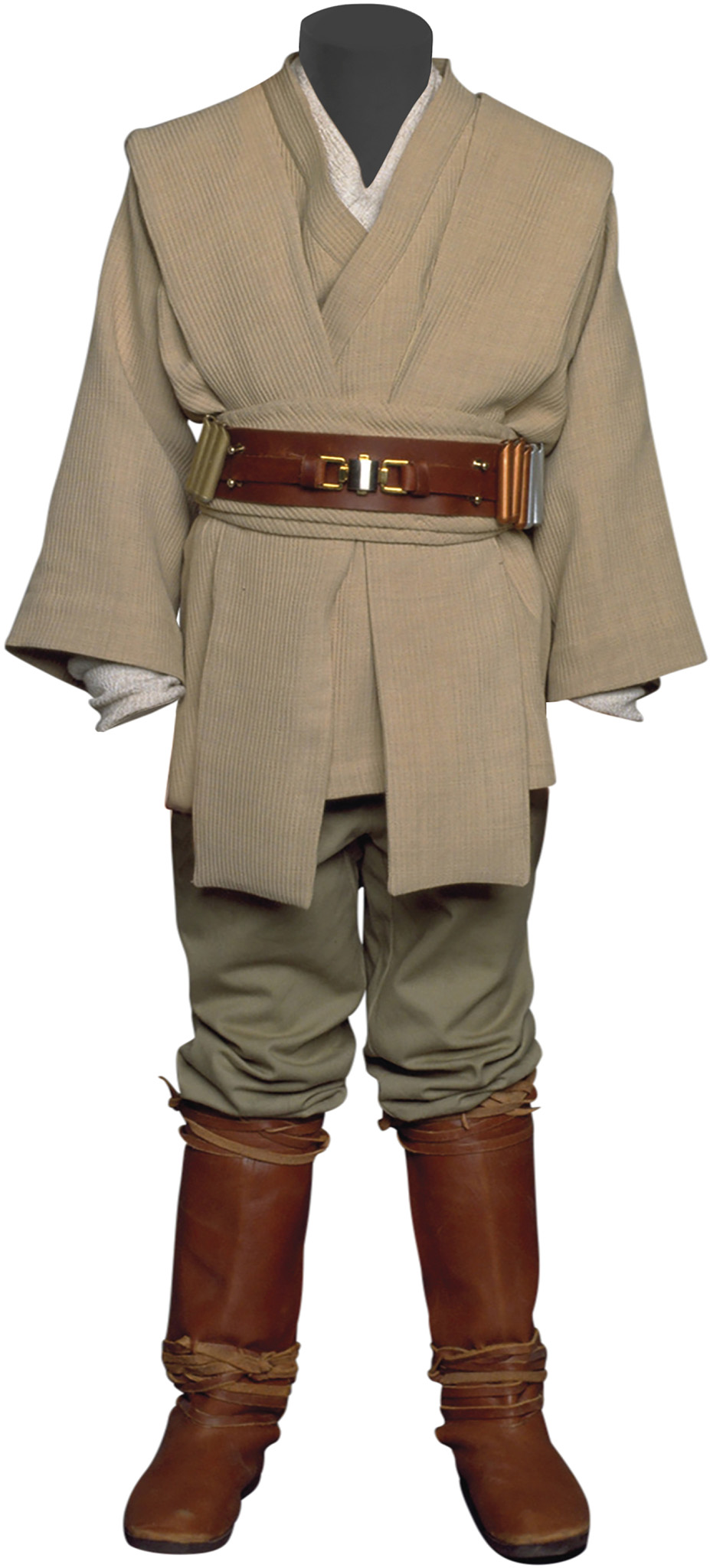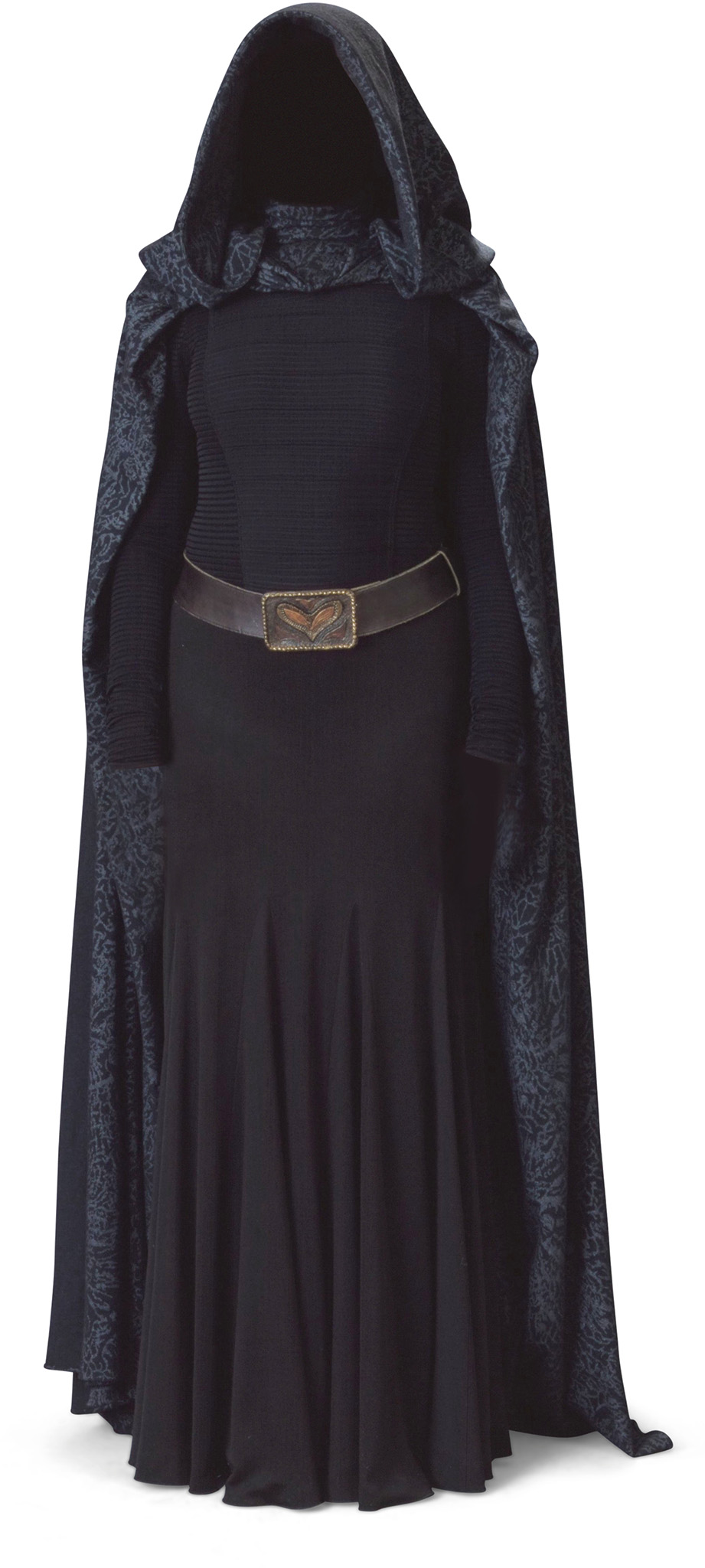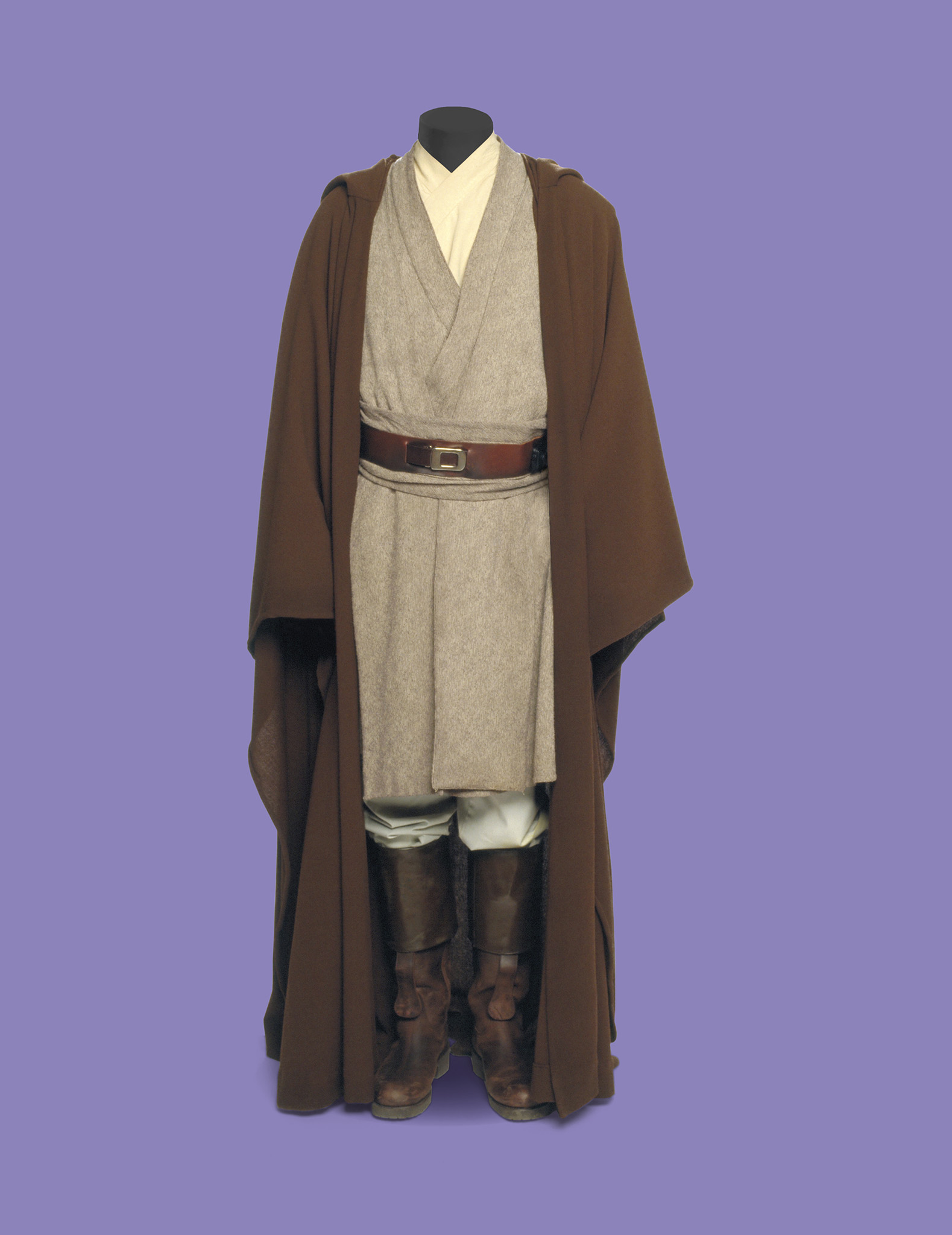g Republic Era g Contents
23
Jedi Robes
Location: Coruscant
Date: 19 BBY
There is a revealing subtext in the chosen attire of the Jedi Order. Up until their final days, the Jedi traversed the galaxy in long robes, layered tunics, and tabards, with little personal affectation or adornment. Strikingly similar, the robes of the Jedi were a visible reminder of their ascetic beliefs and their peacekeeping vocation.
In the days of the High Republic, the Jedi maintained pristine white ceremonial robes for formal functions, and more rugged attire for exploring unknown regions of the galaxy and identifying new outposts in need of their protection. Although skilled in combat, the Jedi never aspired to become great warriors. Protectors and peacekeepers, scholars and sages, their role was clear in the monkish silhouette of their clothing.
This set of robes belonged to the Jedi Master Mace Windu, a champion of the Jedi ideals who served as a senior member of the Jedi High Council in the waning days of the Republic. His robes reflect the typical style of dress for those Jedi practitioners who adopted the ancient traditions that had directed their kind for centuries.
Windu was renowned as a legendary duelist, and a decisive and perceptive guiding force among the decision-makers of the day. He heroically fought to protect the Order from interference, indoctrination, and corruption at the hands of the Galactic Senate. Windu was among the first to record concerns about a ripple in the Force that suggested troubling times ahead and a looming darkness. One of the most outspoken critics of Anakin Skywalker’s acceptance as a Jedi Padawan, he firmly believed in the Jedi Order’s age limits, which required younglings to begin training before they formed attachments that would be difficult to sever in the quest for balanced service to the Force. Windu was a stern teacher who did not suffer fools or students who sought to bend the rules for personal gain.
Even as the Clone Wars swept across the galaxy, Windu strived to protect the Jedi precepts, ultimately failing to maintain the core values of peacekeeping in a climate where he and his brethren were made to serve the Republic as generals and warmongers. Killed in battle with Darth Sidious just before the execution of Order 66, his robes are a somber reminder of the decades of decisive guidance and strict stewardship Windu provided before he was overpowered by the shadow of the Sith.
At first sight, a lineup of Jedi appeared to be made up of almost identical individuals, their faces concealed in shadow by oversized hoods. In rare cases of combat and conflict, the Jedi’s voluminous cloaks provided little in the way of protection, but could make it difficult for an attacker to target their most vulnerable areas.
A few Jedi did buck tradition by dressing in a more distinctive way, but in general their robes were practical, functional, plain, and studiedly undemonstrative, as befitted their vocation. The Jedi devoted their lives to the light side of the Force, rejecting worldly desires of wealth, power, or fame, as well as shunning family and romantic attachments. A Jedi’s outer robe also concealed any distinctive features that might define them as being a specific species or gender.
Beneath a heavy outer robe, Jedi clothing was made from humble materials—easily sourced fibers that were functional for travel, if slightly itchy to wear. A tan tunic, tabard, matching pants, and a utilitarian belt created a uniform of sorts.
While royal houses frequently announced themselves with elaborate symbols woven throughout their garments and other clear signs of wealth, such as jewelry, the robes of the Order were significantly lacking in obvious adornments. Yet this lack of decoration certainly did not equate to a dearth of meaning. Their vestments’ austere simplicity, with little color, shape, or definition—their deliberate lack of obvious design—was a clear and calculated statement in itself. Their robes set them apart from others, and proclaimed the Order’s unworldliness.
For the majority, Jedi robes were a symbol of their sacred vows, and, in their sheer weight, a reminder of their responsibilities. From a young age, Padawan learners adopted this simple wardrobe as a symbolic manifestation of their oath to avoid attachments; embrace an existence of spiritual curiosity; and proclaim their intense, unwavering commitment to serving the Force.

Anakin’s attire was the typically functional clothing of a Jedi Padawan, belying his restless spirit.
However, a particularly distinctive set of robes belonged to the Jedi Knight Barriss Offee, who once served as Padawan to Luminara Unduli. As both women were Mirialan, their robes reflected their culture. Sumptuous fabrics from their home planet showcased their facial tattoos while still conforming with the overall image of the Jedi Order.
Offee’s attire’s dark color palette is striking and significant given her own sad history as a defector from the Jedi Order during the waning days of the Clone Wars. Disillusioned by what Offee saw as the Jedi Order’s fall from grace, in 19 BBY she helped to orchestrate a brutal act of terrorism in her own home. She planted a bomb in the Jedi Temple and framed the Padawan Ahsoka Tano.
Although Offee was ultimately arrested and convicted of the crime by a military tribunal, Tano abandoned the Jedi soon after, disheartened by their poor handling of the incident. At her trial, Offee remained steadfast in her belief that the Jedi and the Republic had both lost their way. Her outspoken pronouncements proved prescient given the final act of Palpatine’s master plan, which resulted in the near extinction of the Jedi and the collapse of the Republic.
The robes of the Jedi reminded both those in their presence and the Force-wielders themselves that they lived apart from conventional society. Those deemed most successful among their ranks embodied the lessons of the life-giving energy of the Force and walked the path it alone prescribed.

In honor of her Mirialan heritage, the Jedi Knight Barriss Offee wore a black underdress and a navy-blue cowl, similar in silhouette to other Jedi robes yet unique to her culture.
